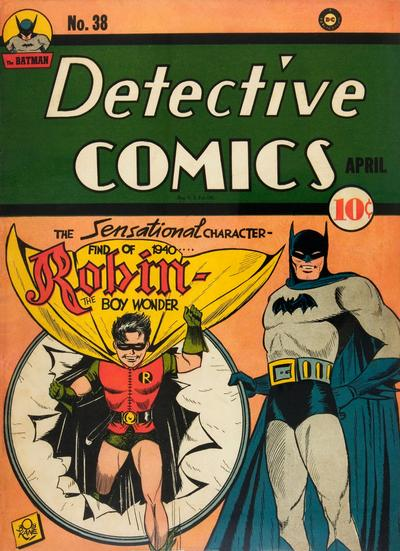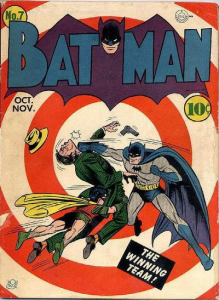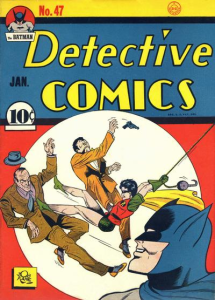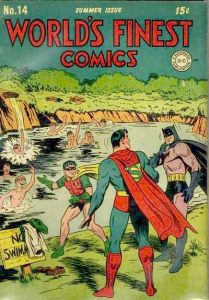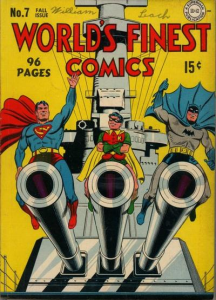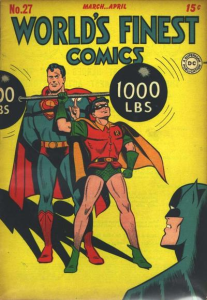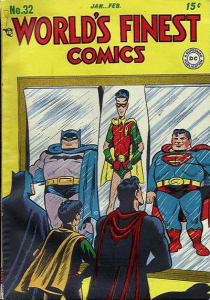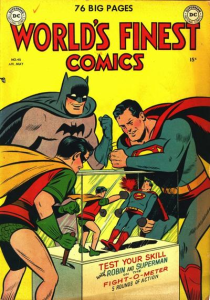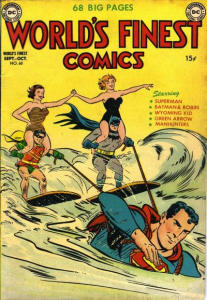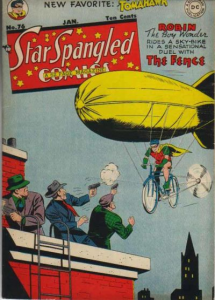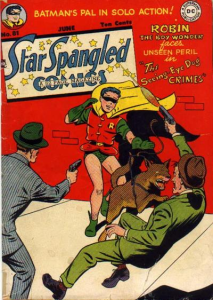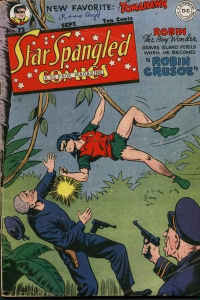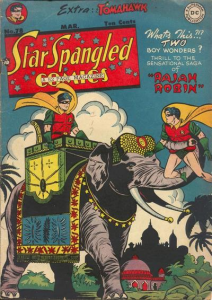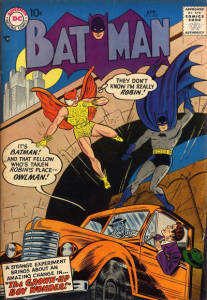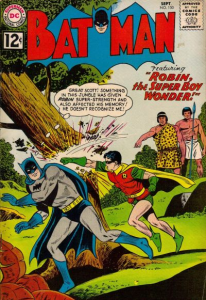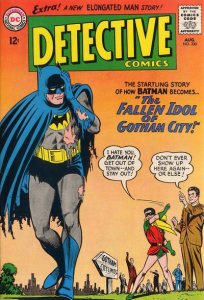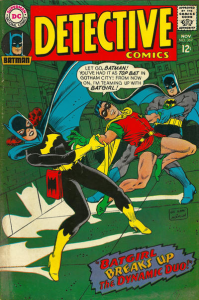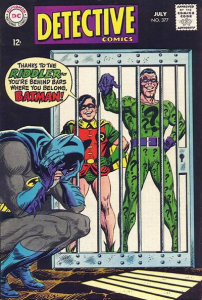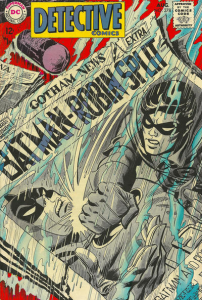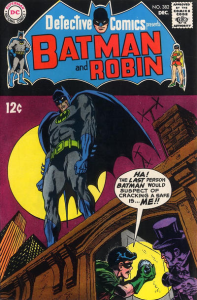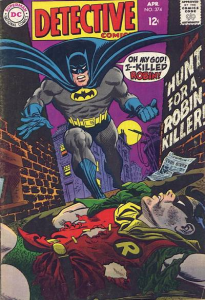Although the idea of Batman running around with an unarmed kid dressed in bright colors whom he takes to gun fights with psychopathic terrorists may strike some as, at the very least, child neglect, it’s an idea that has stuck around. It has been 75 years since the world first saw Dick Grayson’s aerialist parents get killed in front him and Batman swearing him into a crusade against crime. But the thing is, hanging out with the Dark Knight is hardly the craziest thing to ever happen to Dick Grayson!
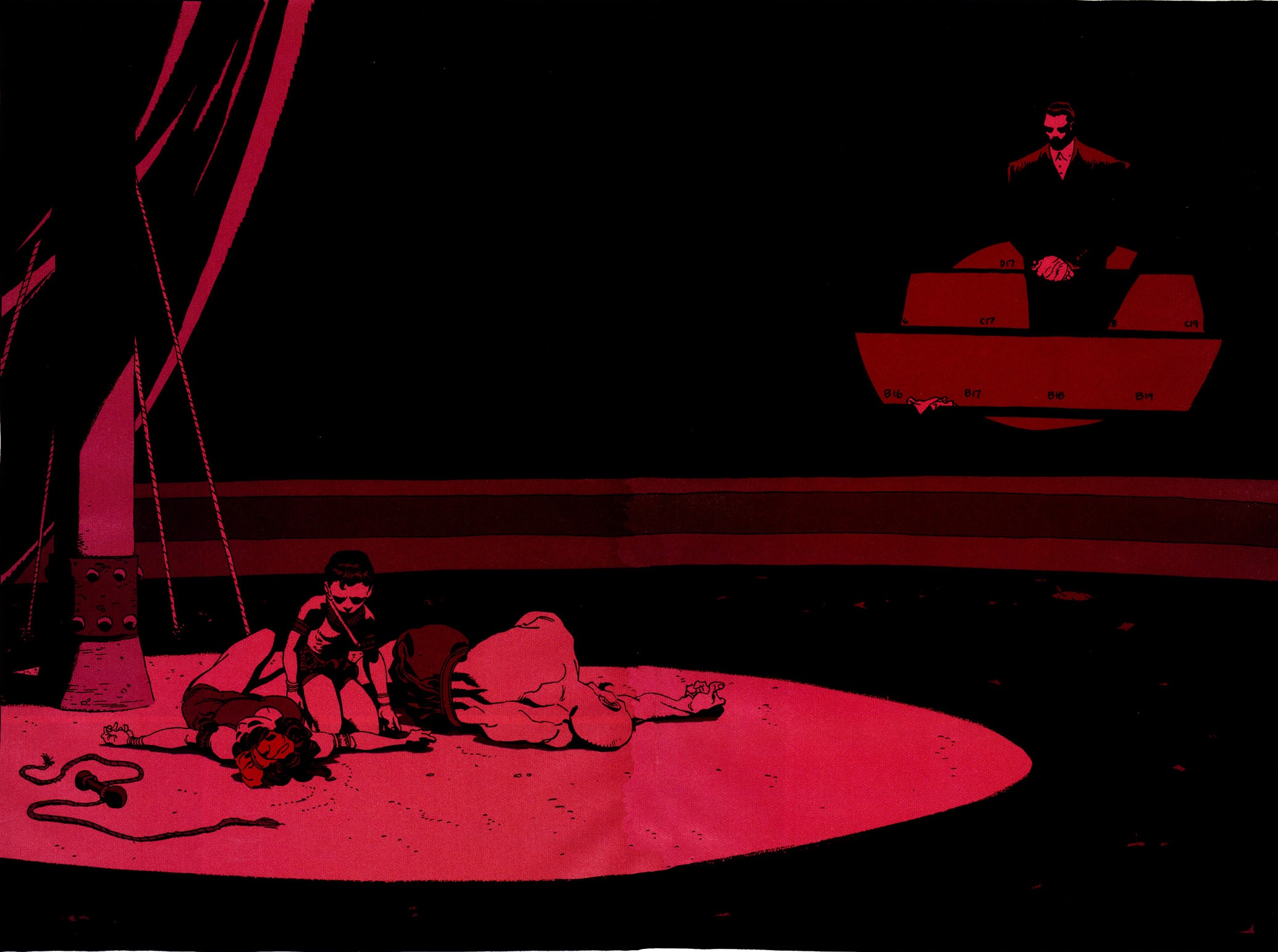 Dark Victory #9
Dark Victory #9
The introduction of Robin the Boy Wonder in 1940 didn’t stem from Batman’s desperate need for a sidekick in-story – until then the Caped Crusader had been doing alright by himself, exchanging fisticuffs with vampiric monks and offensive Asian stereotypes. But even if the editorial aim was merely to appeal to younger readers by giving them someone they could more easily project themselves into, Robin has proven to be a convenient storytelling device. He provides Batman with someone to talk to, loosening the exposition. Better yet, he gives Batman someone to interact with more generally: to bond with, to argue with, to rely on, to worry over; in short, he allows Batman to show more personality than that of a brooding crimefighter (which is one of the reasons Robin is so maligned in some circles, as many fans prefer to focus on the tragic and driven side of the Dark Knight).
Besides Robin’s narrative function, writers have also struggled to come up with psychological justifications for Batman’s decision to recruit a junior partner. The more reactive interpretation is that, as someone who witnessed the murder of his own parents, Bruce Wayne identified with the boy and sought to provide him with a similar catharsis in the form of kicking gangsters in the face. Or maybe Bruce just wanted to give the recently orphaned Dick Grayson a father/mentor figure, but approached it in the same offbeat way he approaches most problems, with jiu-jitsu and a mask. A more proactive perspective is that, having lost his biological family at a young age, Batman craves companionship in his daily life and work, so that’s why he takes Dick in (yes, I know I’m not the first one to make this pun).
Me, I like Alfred’s take on this:
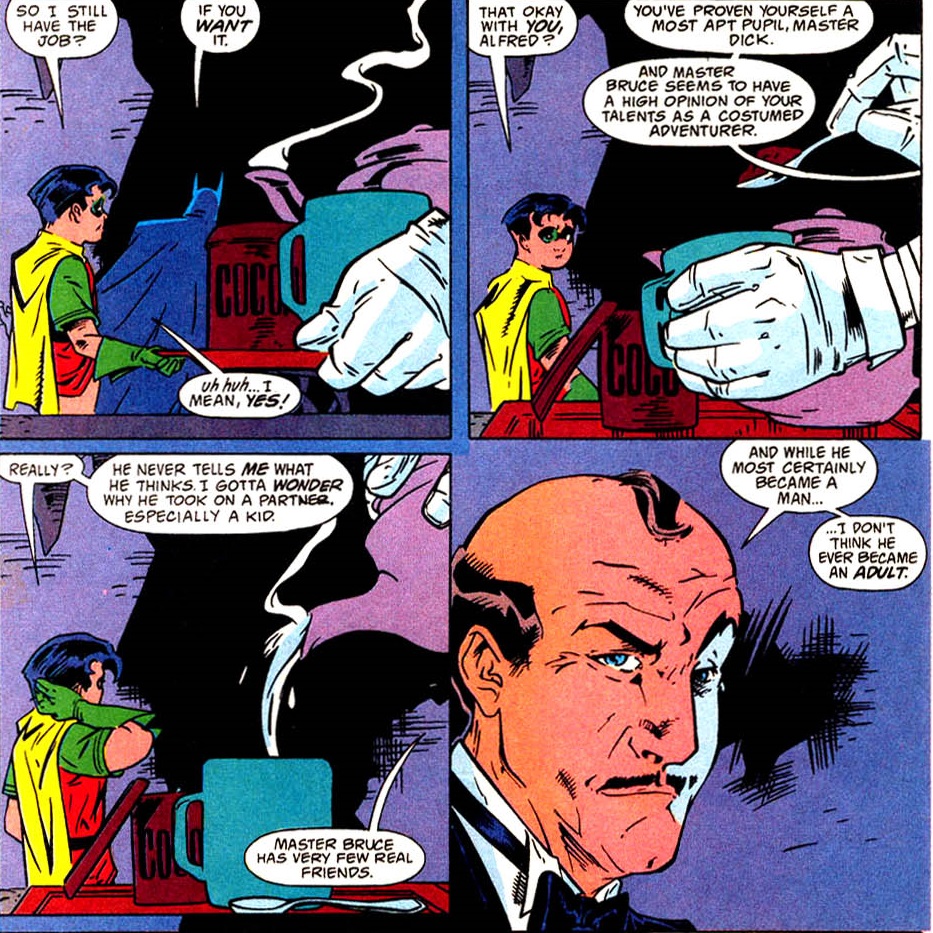 Robin Annual #4
Robin Annual #4
Basically, Batman is the enactment of the childish fantasy of a traumatized Bruce Wayne. With all his costumes and toys, Batman is still a kid… and he wants someone to play with!
No matter how you reason it, the fact is that Dick Grayson came to be a curious character in his own right, beyond a pragmatic marketing strategy, a narrative device, and an in-story emotional crutch for Batman. After all, here is a ten-year-old kid who, besides having to adjust to being the Dark Knight’s partner, also went from being a nomadic circus boy to being the ward of a millionaire and attending a regular school:
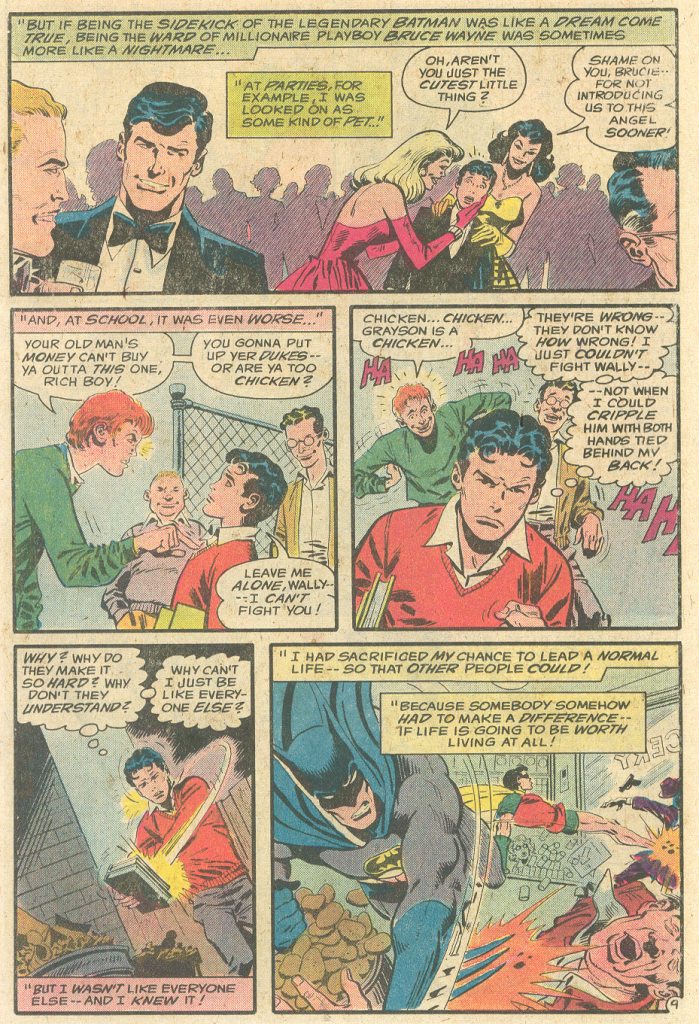 The Untold Legend of the Batman #2
The Untold Legend of the Batman #2
Quite a lot of pressure for a little boy… and just imagine when he discovered girls:
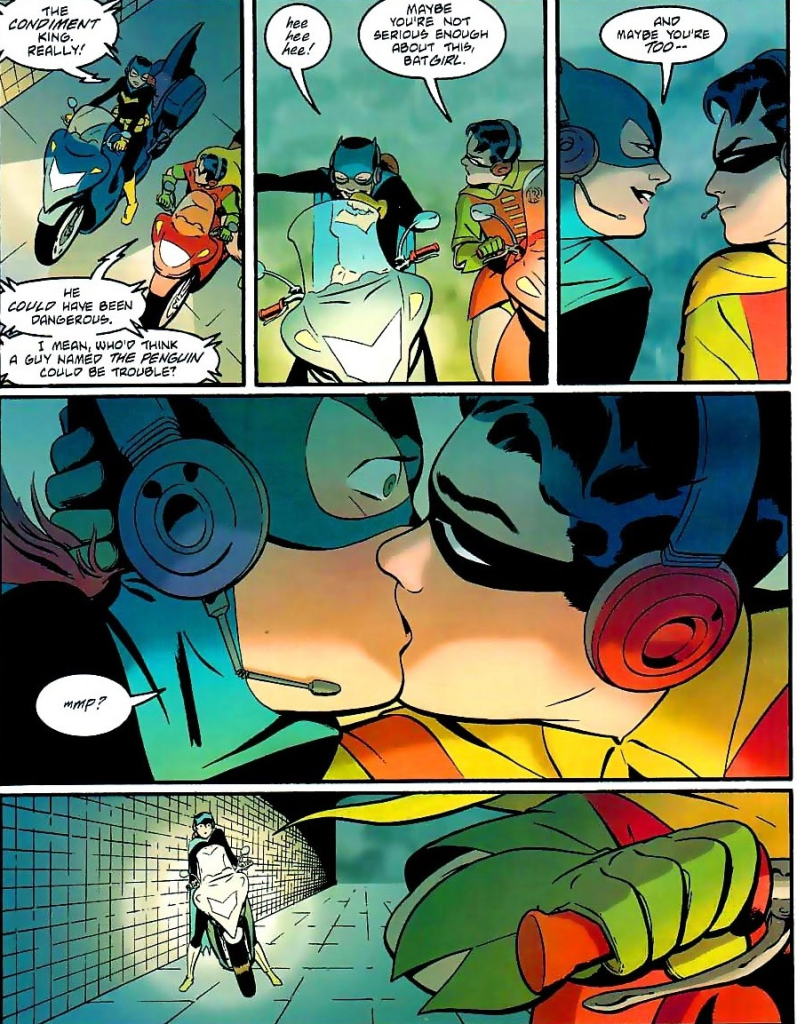 Batgirl: Year One #8
Batgirl: Year One #8
That said, it took almost until the turn of the century for DC to publish a bunch of snappy, cool comics addressing the early stages of the Dynamic Duo from Dick Grayson’s perspective (Robin Annual #4, The Gauntlet, Robin: Year One). During the Golden Age, despite some glimpses into Dick’s school life, readers weren’t given much insight into his growing pains. What they did get was a lot of rousing tales in which the Boy Wonder kicked major ass:
As if brutally beating up grown-ups wasn’t enough, Robin also specialized in torturing them with groan-inducing puns… Although, in his defense, during the Golden Age pretty much everyone loved to pun:
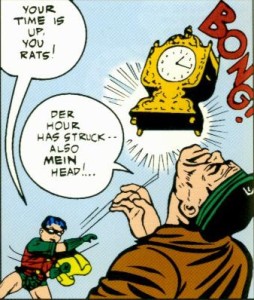 Batman #14
Batman #14
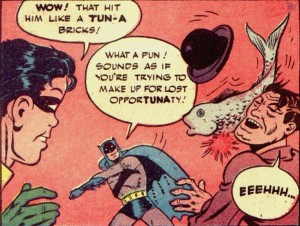 Batman #18
Batman #18
Indeed, Batman himself got contaminated with chronic pun disease, as you can see in this story where he goes out alone because Robin is grounded after having brought in a disappointing report card from school:
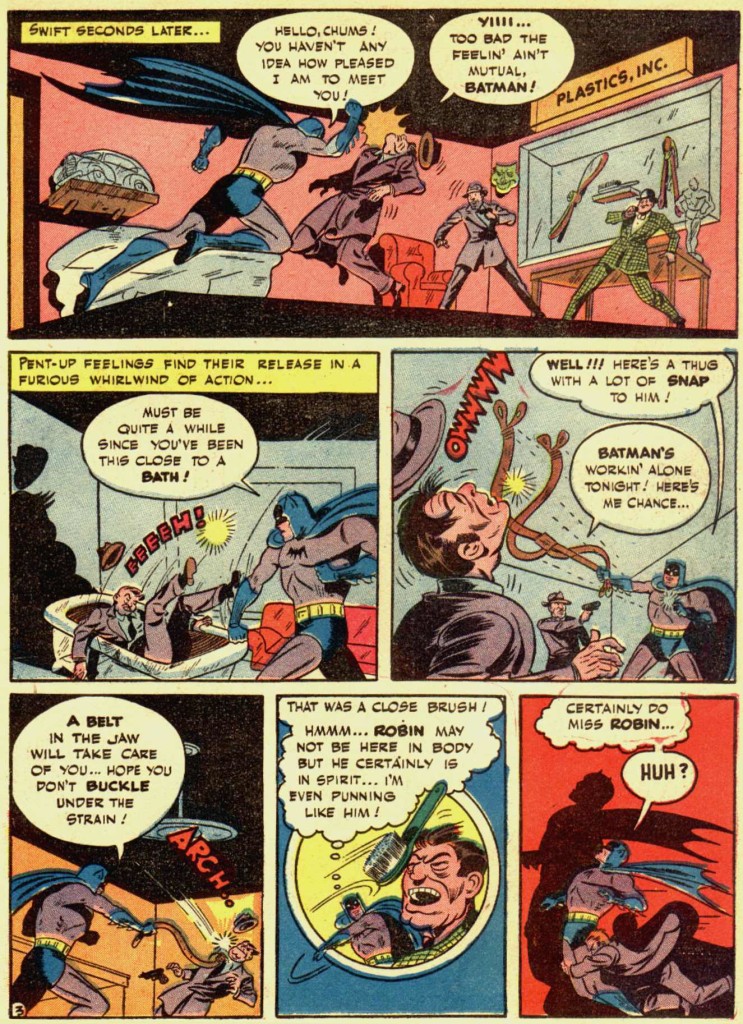 Batman #18
Batman #18
Along with studying and fighting crime, the precocious Dick Grayson took on a number of other parallel activities, from working as a telegraph boy (Batman #22) to guarding atomic experiments in the Pacific (Detective Comics #179). Because the DC universe has terrible child labor laws, at one point Dick even became a successful comics writer, putting his wordplay skills to good use:
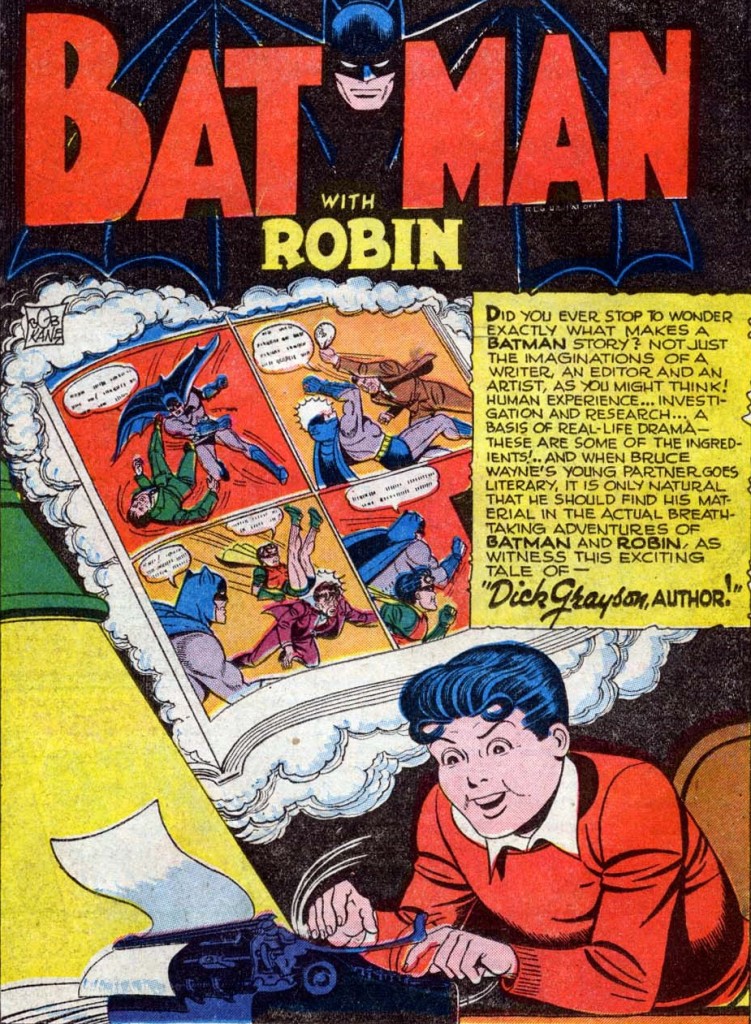 Batman #35
Batman #35
Even more impressively, Robin got to regularly hang out with Superman. Well, at least he did on the covers of World’s Finest Comics, even if not on the inside pages until issue #71, cover-dated July-August 1954 (if I’m not mistaken, the two had only actually met in-story a couple of years before, in Superman #76, despite a small cameo way back in Superman #20, and their first official team-up was told in World’s Finest Comics #94 – yes, I spend way too much time at Mike’s Amazing World of Comics).
And while many people tend to focus on how discomfiting and homoerotic some of those World’s Finest Comics covers are…
…I think it’s interesting enough that they show the Boy Wonder as a close pal of the most powerful man on Earth:
Furthermore, from 1947 to 1951, Robin had a bunch of solo adventures in Star Spangled Comics. And let me tell you, things tended to get borderline Dadaist over there:
In terms of sheer bizarreness, though, nothing beats the heights of the Silver Age, when psychotronic fantasy became the genre du jour and the Caped Crusader spent most of his time yelling ‘Great Scott!’ In the 1950s and early 1960s, Batman comics resembled some kind of fever dream after watching Barbarella, with stories often revolving around supernatural creatures and metamorphoses.
For example, an alien gas in ‘The Grown-Up Boy Wonder’ causes Dick Grayson to temporarily grow into a man, so he gets an even more ludicrous costume and starts calling himself Owlman. After getting struck by a lightning in ‘Robin, the Super Boy Wonder,’ Dick loses his memory, gains super-strength, and becomes a warrior in the Yucatán jungle (as it usually happens to people struck by lightning). And, of course, in the justly famous ‘Robin Dies at Dawn,’ Dick is killed by a space monster… and things only get weirder from there!
These and other stories highlight how important Robin is to Batman. More than ersatz father and son, more than a teacher-pupil relationship, more than a pop culture gay joke, the Dynamic Duo are a team. Their fighting style is methodically coordinated and they can guess what’s on each other’s minds. In one of my all-time favorite issues, Batman #204, the Caped Crusader and the Boy Wonder manage to get out of a jam by discretely using sign language underneath the noses of the police.
Editor Julie Schwartz enjoyed playing with fans’ awareness of the strong ties at the core of the Dynamic Duo. In the ’60s, he commissioned a handful of covers that seemed to radically alter the status quo of the Batman and Robin partnership. Needless to say, those covers were mostly cheats, but some writers actually came up with clever ways to integrate the misleading cover images into their stories…
NEXT: Robin goes to college.

